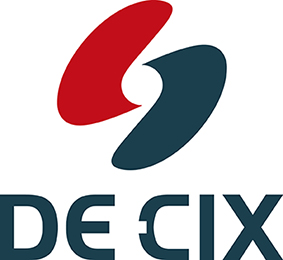Open Data Center Connectivity: The Key to Digital Localization
Ivo Ivanov from DE-CIX, on the real opportunity for data center operators through network solutions and enterprise connectivity offerings.

© kentoh| istockphoto.com
Digital everything, everywhere is the mantra of businesses everywhere. To the chagrin of consumers, workers, and data centers alike, it’s about adapting or risking being left behind. This applies to everything from schools and remote learning to sectors like the automotive industry, banking, healthcare, farming, transportation, energy and, almost anything else that can be automated, programmed, and digitized. Enabled and powered by the Internet, almost anyone with access can review, order, scan, pay, watch, learn and exchange information. With cloud computing becoming further adopted, localizing data and access points is more important than ever before.
So, how do large multi-national enterprises deal with the conflicting challenges of bringing cloud-based IT resources closer to the edge in a geographically disparate global presence?
Senior VP and CIO of Hilton, Michael Leidinger put it most succinctly: “One part of the digital experience in a global company is how to localize, getting the content and applications as close to the customer as possible, distributing content and core application functionality effectively to multiple locations around the world and out to the edge”.
As Hilton has been driving their cloud journey, Leidinger explained, the company has moved away from depending on one centralized data center (DC), instead leveraging a network of cloud providers and network providers to build instances wherever they are building properties, bringing the digital experience as close to the customer and as close to their hotels as possible. “That's absolutely critical,” Leidinger said, “it's all about resilience and performance.”
This testament is further supported by a survey that DE-CIX, as the world’s leading Internet Exchange operator, commissioned in 2021 with the German market research company, Research in Action. Key data points garnered from the survey indicate that three quarters of companies with a workforce of more than 2,500 are planning to upgrade their connectivity solutions for remote working within the next two years. With this drive to enable Work-From-Home (WFH) capabilities, connectivity to Internet-based cloud applications such as the Microsoft 365 product suite is important.
To accommodate WFH, enterprises must have consistent performance for employees to access cloud-based applications. Unfortunately, that is often not possible today. The DE-CIX survey revealed that 80% of enterprises are experiencing an increase in performance issues with enterprise-grade software packages, such as Microsoft 365. This feedback exemplifies the issue of a distributed and remote workforce, and how digital localization is required to reduce latency and improve connectivity, access, and performance for everyone.
Data centers: the epicenter of connectivity
Interconnection and connectivity commonly take place in colocation or data center facilities, purpose-built with the space, power, and infrastructure to support large-scale computing. Data centers offer a natural interconnection habitat, as many customers require connectivity in and out of the facility, with the need to assure network diversity and redundancy. Furthermore, these customers also need direct access to applications and service providers, such as cloud operators like Microsoft. Inherent in a data center’s business plan is the ability to provide connectivity access in and out of its facilities in a variety of flavors to meet the varying needs of its customers. Most data center operators offer a Meet-Me-Room (MMR) to facilitate interconnections – this centralizes the ability to connect networks and can be done automatically with the right MMR platform capabilities.
With no other capabilities apart from space, power, and an MMR, data centers are at the epicenter of connectivity. While most data center operators recognize their position as a confluence point for their customers, space and power is primarily real estate ‘talk’. As such, facility managers enable horizontal solutions by providing space on the data center floor with access through cabling to reach other customers in a managed central location. However, the real opportunity for data center operators lies within the capabilities that only network solutions can deliver – the Internet.
As we consider the data center model, most operators focus on a horizontal plan to fill up their space and to provide power and connectivity. What happens in the cabinets, cages or four-walls of a private-suite is up to the customer to then optimize. But there’s more to be had: Since connectivity is the cornerstone by-product of a data center, operators have an opportunity to explore additional revenue streams by considering a vertical product plan.
Horizontal versus vertical solutions
Traditionally, we consider data centers as a horizontal model, where customers expand by taking more space (additional square footage) and power. However, operators should also consider a vertical model, one that can expand a company’s product suite up the OSI stack into services such as the Internet, including cloud-based solutions, automation, applications, and more.
Although real estate expertise is prevalent across a data center provider, tapping expertise to identify product opportunities up the ‘stack’ can make a greater impact on a company’s bottom-line than just acquiring more real estate. A key requirement to do so is an interconnection platform. These are typically enabled by third-party providers. By taking a position in owning an interconnection platform, data center operators can work in partnership with the platform operator to enhance their customer ecosystems much in the same way their physical MMRs do today.
Interconnection platforms, operated and powered by professionals, provide data center operators an effective and successful solution to building private and public ecosystems for their customers. The platform can serve as a virtual MMR across a data center operator’s entire footprint, enabling private interconnection across a company’s dispersed customer ecosystem. Fortified with security features to ensure data residing in a closed ecosystem is secure, customer networks can achieve a lot more within the four-walls of a facility. Developing this kind of interconnection gravity can have a multi-factor impact on the business value of a data center by meeting the needs of large enterprises on the road to digitalization. This is what the vertical model is all about.
For digital interconnection platforms to succeed, there must be an inherent ecosystem ready to be accessed, without the wait for networks, customers, and others to join. Operators should consider how they manage the platform, where and how it connects its private facilities, and where and how it connects to the public Internet, cloud, content, and other providers. Whether it’s for private interconnection, public Internet access or more secure and direct cloud connectivity, data center operators should challenge themselves to consider how they can further enhance their services for customers by shifting from a horizontal model to a vertical model.
Digital localization
Once a data center operator understands the vertical model and the impact on its business, expanding facilities horizontally, and into new markets, can be analyzed differently. Since not all markets are the same, and each market’s demands and needs are different, how a company’s interconnection capabilities can bring content and applications closer to the edge is a vertical business solution that can help justify the cost of expansions. As digitalization at the edge continues to be needed, data center operators are challenged to consider how they can adjust their business models – including the way they design and support smaller facilities in hard-to-reach locations.
By adopting an interconnection-focused approach to data center deployments, operators can leverage the connectivity and ecosystem from more mature locations to uplift a new market relatively quickly and effectively. There are a number of ways that this can be done cost-effectively and efficiently. For example, in Germany, the Stuttgart-IX, a volunteer group, partnered with DE-CIX to expand capabilities to include cloud and interconnection to Frankfurt. In so doing, the region achieved immediate performance improvements to reach Amazon, Google, and Microsoft cloud-based applications. Similarly in Greece, Lamda Hellix – recently acquired by Digital Realty – partnered with DE-CIX to form SEECIX, the South East Europe Cloud & Interconnection Exchange. This interconnection hub in Athens, Greece, serves Southeast Europe with interconnection back to DE-CIX in Madrid, to fortify access to content, cloud, and other networks.
Data center operators throughout the world recognize the need to empower their customers through their own digital ecosystem. Knowledge and know-how are the common factors for data center operators inhibiting exploration of how to do so. Today, there are a number of ways data center providers can expand their ‘vertical footprint’. If this expansion not already underway, it’s time to start – because you may be soon left behind.
Ivo A. Ivanov is Chief Executive Officer of DE-CIX International, with more than 10 years’ experience in the regulatory, legal and commercial Internet environment. Ivo joined DE-CIX in January 2007. In recent years, he has been deeply involved in the establishment of DE-CIX sites in Istanbul, Palermo, Madrid, Marseille, New York, Dallas, Dubai (UAE-IX powered by DE-CIX), as well as Mumbai (Mumbai IX powered by DE-CIX), and several DE-CIX consultancy projects in Africa, Asia, and Europe.
Ivo has an educational background focused on law and business. Fluent in German, English, Russian, and Bulgarian, he graduated from a German business school in 1995 and holds two law degrees, from the Universities of Sofia (Bulgaria) and Bonn (Germany). After graduation, he worked as a lawyer, with a focus on e-commerce law, IP law, telecommunications law, and data protection law.





